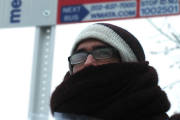Summer: It’s what millions of children look forward to all year, from the second they step into the old brick schoolhouse in September. It’s what we, as parents, look forward to all year, too, as it presents an opportunity to relax, have fun with our children, enjoy new experiences and continue family traditions.
Summer means hot sunny days filled with biking, rollerblading and skateboarding, evening barbeques in the backyard, s wimming in the pool, relaxing at the beach and stunning fireworks displays. However, each of these activities has implicit dangers, and we should be mindful so as to protect those most precious to us. Here are some tips on how to do so and what to do when accidents occur:
Hot sunny days: After the cool air and rainy days of April and May, many people relish a blistering hot day outside. However, the sun can pose numerous threats, especially to young children.
Sunburn: In all likelihood, you’ve probably woken up with sunburn in the past and reprimanded yourself for not taking better precautions the day prior. The best protection from the sun is, of course, not to be in it — especially during the middle of the day, when the sun is most intense. Stay in the shade, ideally under an umbrella. However, sunburns can happen even on cloudy days, as harmful ultraviolet rays can penetrate clouds. The American Academy of Pediatrics recommends using a suntan lotion SPF 15 or higher, and it’s important to reapply every two hours or after swimming. Children can also be protected with physical barriers — such as sunglasses with UV protection, rashguards and a hat with a brim — though none of these are a replacement for suntan lotion. Children 6 months and younger should avoid direct sun exposure, have their skin covered and wear a hat. Of course, sunburn may still happen, so when it does you can apply cool compresses to the area for comfort, give an appropriate dose of acetaminophen or ibuprofen for pain control, and try topical lotions that contain aloe vera. Remember not to use a petroleum-based lotion, as this will trap heat in your skin.
Heat stroke and heat exhaustion: Heat illness is a spectrum, ranging from benign (but painful) heat cramps to heat stroke. Children are at higher risk than adults for these heat-related illnesses. As with sunburn, prevention is key. Keep children out of direct sunlight, and make sure they stay well-hydrated. Additionally, always make sure to double-check the back seats in your car and ensure your children have gotten out when you reach your destination. Signs of concerning heat-related illness include vomiting, headache, fatigue, rapid heart rate and altered mental status. If you’re concerned your child has heat-related illness, seek emergency care immediately.
[See: 8 Ways to Stay Hydrated This Summer Without Drinking Water.]
Biking, rollerblading and skateboarding: Carefree summer days are times when children love to ride. Protecting their heads with an appropriately sized helmet is crucial — irrespective of the distance they’re traveling. After all, most accidents happen close to home. Modeling such behavior for children is also important when we ride. Elbowguards, wristguards and kneeguards are advised when rollerblading or skateboarding. As a pediatric emergency room physician, I see way too many fractures and head injuries that may have been prevented had the child been wearing the appropriate safety equipment.
Barbecues: While we all love a freshly grilled hotdog, barbeques pose tremendous safety risks for children. Never leave your barbecue unattended, and make sure that young children are not in the vicinity — even after you’re done cooking. Keep a spray bottle of water nearby, and, if possible, a fire extinguisher. Be extremely careful with grills that are self-assembled, as they tend to be less sturdy and easier to knock over. A typically unrecognized risk of barbeques are that metal bristles from brushes used to clean the grates can break off, find their way into food being cooked, be ingested and cause serious injury. Again, prevention is key — use an alternative method to clean your grill.
Swimming in the pool: Nothing is more refreshing than a dunk in the pool on a hot summer day, but while you’re having fun yourself, make sure to watch your children. Never allow a child to swim unattended, and never let him or her out of sight in the vicinity of a swimming pool. Accidents can happen in a split second, so make sure those responsible for watching children swim are not distracted themselves. Ensure that children who cannot swim are wearing approved life jackets (not inflatable flotation devices), and that there are rescue devices at hand and a phone near the pool. Be wary of a child getting stuck under a large pool toy, and if a child is missing near a pool, make sure to look in the water first. And of course, if you have a pool in your backyard, make sure you have a fence at least 4-feet high that has no entry points aside from a doorway that remains locked when the pool is not in use.
[See: Summer Workouts: How to Handle the Heat.]
Relaxing at the beach: In addition to the aforementioned water safety tips, always make sure your children are swimming by a lifeguard, and pay attention to local beach and ocean forecasts. Teach your children to respect the ocean — while a great time can be had, it can be very dangerous, as well. When playing in the ocean with younger children, never keep them more than an arm’s length away, even if you are just by the edge. Teach your older children about rip currents — narrow streams of fast-moving water that run perpendicular to the coast. If caught in one, stay calm, call for help and don’t swim against it — you’ll only tire yourself out by doing so.
Jellyfish stings: If you’ve been to a beach, you’ve seen jellyfish in the ocean (or on the sand). Never touch the tentacles of a jellyfish that’s laying on the sand — occasionally, they can still cause a sting. If stung, scrape the area with the flat edge of an object (e.g. a credit card) to remove any remnants from your skin. Your best bet for pain relief is to flush the affected area with sea water and soak it in hot water. Other topical treatments — including vinegar, meat tenderizer and baking soda — may or may not be helpful (and may in fact be harmful). And contrary to what was seen on “Friends,” urine will not be helpful.
[See: Your Guide to Stylish Sun Protection.]
Firework displays: Fireworks can be the made-for-television moment at the end of an exhausting summer day, but can be life-altering if not handled with caution. Children should never play with firecrackers, rockets or fireworks, as they pose a risk to not only injure the user but also nearby spectators. Even sparklers, a seemingly harmless item, reach temperatures hot enough to melt metal. Never point fireworks in the vicinity of others, and never allow a child to pick up a “dud.” If any injuries are sustained from fireworks, seek emergency care immediately.
Summer is the best time of our children’s lives. It’s up to us parents to ensure that they not only enjoy the summer to their fullest extent, but that they do so safely.
More from U.S. News
Could Your Summer Blues Be Seasonal Depression?
Your Guide to Stylish Sun Protection
Summer Workouts: How to Handle the Heat
How to Avoid Injury and Illness During Summer Break originally appeared on usnews.com







